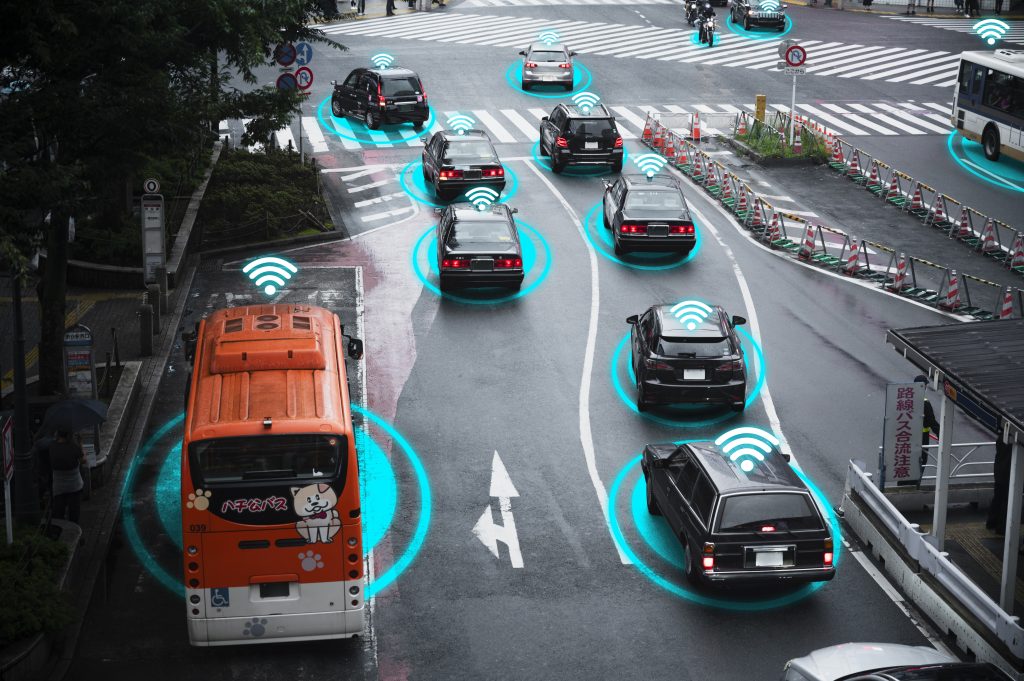Have you ever wondered if there are any downsides to incorporating artificial intelligence (AI) in transportation? While AI has undoubtedly revolutionized the industry, it is essential to acknowledge the potential disadvantages that come with it. In this discussion, we will explore the various challenges and drawbacks associated with the implementation of AI in transportation, including high initial costs, job displacement, cybersecurity risks, ethical concerns, limited decision-making abilities, resistance to adoption, integration challenges, and the need for a skilled workforce. So, let’s uncover the potential pitfalls of AI in transportation and discover how they can be addressed to ensure a seamless future in this ever-evolving field.
High Initial Investment
The high initial investment required for implementing AI in the transportation industry can pose significant financial challenges for organizations. The cost implications and financial barriers associated with AI implementation can strain an organization’s budget and create budget constraints. The implementation expenses for AI technology, including the purchase and installation of necessary hardware and software, can be quite expensive. Additionally, recruiting staff to manage and maintain the AI system adds to the overall cost. Resource allocation becomes crucial as organizations need to consider if the advantages of implementing AI in transportation exceed the cost. Furthermore, the cost of maintaining AI technology can quickly add up, as regular updates and maintenance are necessary. Training requirements for AI systems can also be expensive, requiring substantial time and resources. Therefore, organizations need to carefully consider and plan for the high initial investment and implementation expenses associated with AI in the transportation industry. Effective budgeting and resource management are essential to overcome these financial barriers and successfully implement AI technology.
Job Displacement
With the high initial investment required for implementing AI in the transportation industry, another significant concern arises: job displacement. The integration of AI technology in transportation operations has the potential to automate various tasks traditionally performed by humans, leading to a potential loss of employment opportunities. This displacement of jobs can have a significant impact on society and the workforce, requiring careful consideration of potential solutions and their long-term effects.
One potential solution to mitigate the impact of job displacement is the implementation of retraining programs. These programs can help displaced workers acquire new skills and transition into roles that complement AI technology. By equipping workers with the necessary knowledge and skills, retraining programs can help alleviate the negative effects of job loss and ensure that individuals remain employable in the evolving transportation industry.
However, it is important to acknowledge the economic implications of job displacement. While AI technology can improve efficiency and reduce costs for organizations, it is crucial to consider the social and economic consequences of widespread job loss. Governments and industries must work together to develop strategies that support workers affected by job displacement, such as providing financial assistance, career counseling, and job placement services.
Cybersecurity Risks
Cybersecurity risks in the transportation industry’s adoption of AI technology necessitate robust measures to protect against potential threats. The reliance on AI systems increases the risk of cyber threats, including data breaches, hacking vulnerabilities, and privacy concerns. To address these risks, the transportation industry needs to implement strong security measures and regularly update software and hardware to protect against cyberattacks. Disruption to operations and the potential for hackers to steal sensitive information are major concerns. Protecting AI technology from cyber threats is crucial to maintaining the integrity and security of transportation operations.
To mitigate these risks, the following security measures should be implemented:
| Cybersecurity Measures | Description |
|---|---|
| Encryption | Encrypting data to protect it from unauthorized access |
| Intrusion Detection Systems | Installing systems to detect and prevent unauthorized access |
| Regular System Updates | Keeping software and hardware up to date with the latest security patches |
| User Authentication | Implementing strong authentication protocols to ensure only authorized users have access |
| Employee Training | Providing training to employees on cybersecurity best practices |
| Incident Response Plan | Developing a plan to respond to and mitigate cyber threats |
Ethical Concerns
As the transportation industry embraces AI technology, it is essential to address the ethical concerns that arise from its implementation. The use of AI in transportation raises ethical implications, particularly regarding privacy concerns, bias issues, data collection, transparency, and accountability. One major concern is the collection of personal data by AI systems, as it raises questions about privacy and the potential misuse of sensitive information. Additionally, bias in AI algorithms can result in unfair treatment or discrimination, impacting the safety and well-being of individuals. Transparency and accountability are also key ethical considerations, as the decision-making processes of AI systems need to be understandable and traceable. It is crucial to ensure that AI technology in transportation operates ethically and respects individuals’ rights and well-being. Implementing strict regulations and guidelines can help mitigate these ethical concerns and promote responsible AI use in the transportation industry.
Limited Decision-Making Abilities
AI in transportation is limited in its decision-making abilities, which can pose challenges in complex situations that require human judgment and intuition. While AI systems excel in processing large amounts of data and making decisions based on predefined rules and patterns, they struggle to adapt to unique or unpredictable scenarios. Here are some key limitations in complex situations:
- Ethical implications: AI lacks the ability to make ethical judgments, raising concerns about the potential consequences of its decisions on human lives and societal well-being.
- Impact on employment: The implementation of AI in transportation may lead to job displacement, particularly for roles that can be automated. This raises questions about the social and economic impact on the workforce.
- Regulatory barriers: The development and deployment of AI technologies in transportation face regulatory challenges, as existing laws may not adequately address the complexities of AI decision-making.
To overcome these limitations, training requirements for AI systems need to be carefully considered. AI algorithms need to be trained on vast amounts of data to improve their decision-making capabilities in complex situations. Additionally, ongoing research and development are necessary to enhance AI’s decision-making abilities and address the ethical implications and regulatory barriers associated with its use in transportation.
Resistance to Adoption
Resistance to adoption of AI in the transportation industry can stem from various factors, including concerns about job displacement, regulatory barriers, and the need for proper training and expertise. Cultural barriers may also play a role, as organizations and employees may be resistant to change and hesitant to embrace new technologies. Additionally, regulatory barriers, such as strict regulations and policies surrounding the use of AI in transportation, can hinder its widespread adoption. Another challenge is the availability of data required to train AI algorithms effectively. Without access to high-quality and relevant data, the potential benefits of AI in transportation may not be fully realized. Furthermore, the future implications of AI adoption, such as the impact on employment and the overall workforce, can contribute to resistance. To overcome these barriers, it is crucial to address concerns, provide proper training and support, and ensure regulatory frameworks that foster the safe and responsible implementation of AI in transportation. By doing so, the industry can unlock the potential benefits of AI and pave the way for a more efficient and sustainable transportation system.
Integration Challenges
Integration challenges in the transportation industry arise due to the complex nature of incorporating AI technology into existing systems and processes. The implementation of AI poses several barriers and technological hurdles that need to be overcome for successful integration. Here are three key challenges in integrating AI into transportation:
- Compatibility issues: AI systems may not be compatible with the existing infrastructure and software used in the transportation industry. This can result in difficulties in data sharing, communication, and interoperability between different systems.
- System integration: Integrating AI technology requires seamless integration with the existing transportation systems and processes. This involves connecting AI algorithms with the existing hardware, software, and databases, which can be a complex task.
- Implementation barriers: The implementation of AI in transportation may face resistance from organizations due to factors such as cost, lack of expertise, and concerns about job displacement. Overcoming these barriers requires careful planning, proper training, and addressing the concerns of stakeholders.
Addressing these integration challenges is crucial to fully leverage the potential benefits of AI in the transportation industry. It requires collaboration between technology providers, industry stakeholders, and policymakers to develop effective solutions and ensure a smooth transition to AI-enabled transportation systems.
Lack of Skilled Workforce
The successful integration of AI technology in the transportation industry requires addressing the challenge of a lack of skilled workforce capable of effectively utilizing and managing AI systems. One of the main drawbacks of implementing AI in transportation is the shortage of a skilled workforce. The transportation industry faces recruitment challenges and struggles with talent acquisition due to the expertise gap in AI technology. The training requirements for AI systems can be expensive, both in terms of time and resources. AI experts may not readily be available, and teaching others how to use the technology takes time. Regular retraining may also be necessary to keep up with the evolving AI systems. To overcome these challenges and bridge the expertise gap, organizations need to invest in training programs and create opportunities for skill development in AI technology. They should also focus on attracting and retaining talent with AI expertise through competitive compensation packages and career advancement opportunities. By addressing the shortage of skilled workforce and providing the necessary training, the transportation industry can effectively harness the potential of AI technology in improving efficiency and safety in transportation operations.



